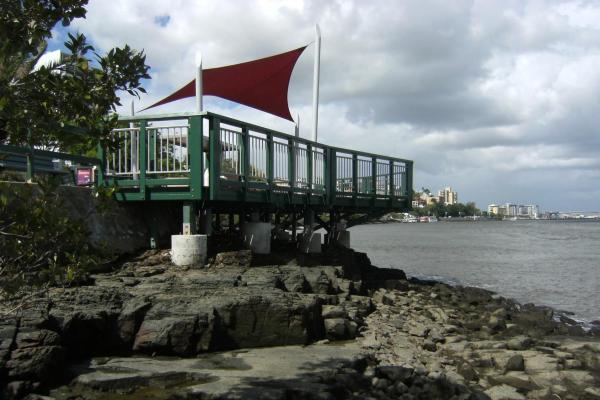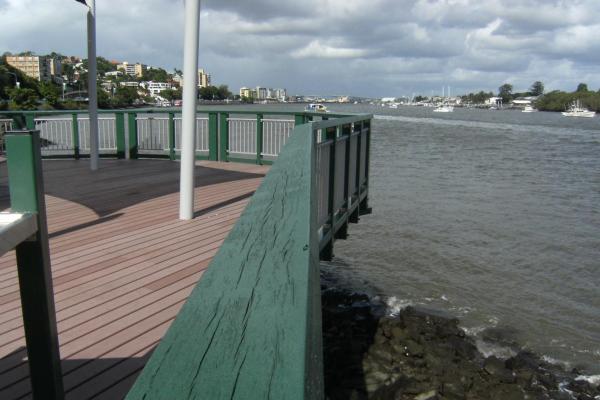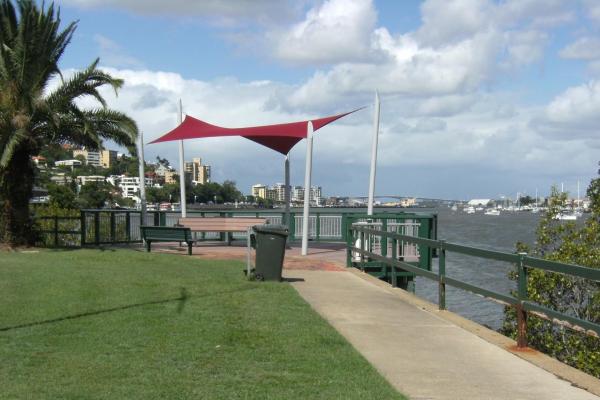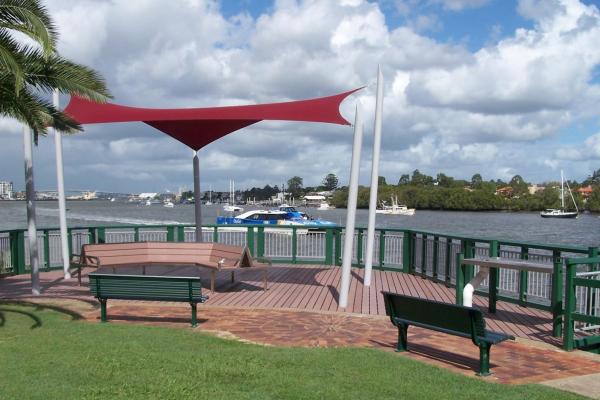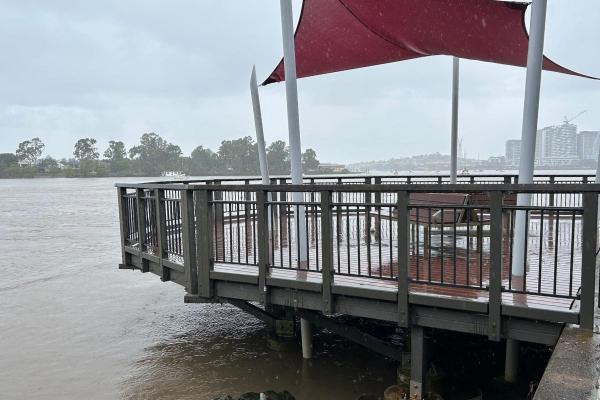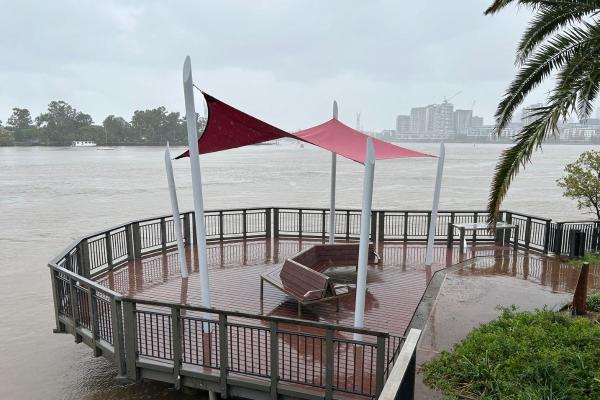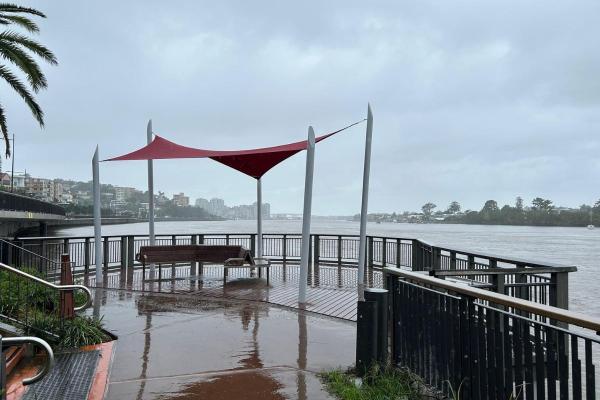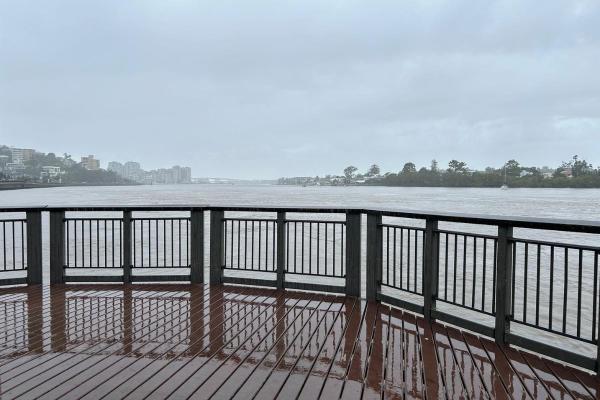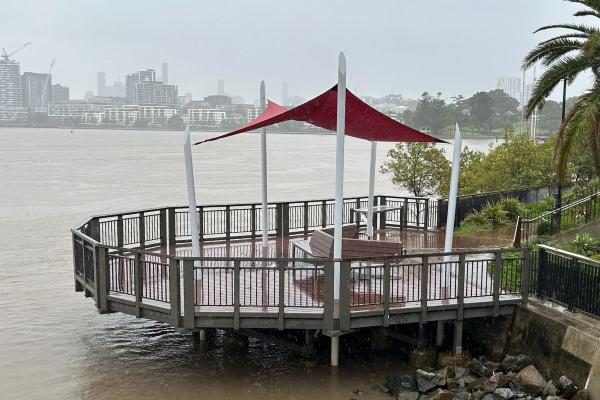Cameron Rocks fishing and viewing platform located on the Brisbane River in Hamilton, Queensland posed significant durability challenges for Brisbane City Council due to strong tidal water cycles, highly corrosive salinity and UV exposure. Read on to discover how testing on structural members at Cameron Rocks more than a decade after the structure was installed found the highly corrosive environment no match for Wagners Fibre Reinforced Polymer (FRP).
In 2009 the old corroded metallic structure at Cameron Rocks was replaced with a more durable Fibre Reinforced Polymer (FRP) structure. This structure not only endured the day to day impact of the harsh marine environment in which it was situated, but also significant events like the 2011 floods.
Twelve years on from installation Wagners CFT tested the structure for its durability including interlaminar shear, compressive and flexural strength.
“With the interlaminar shear strength under standard ASTM D2344 our test produced a 50.15 MPa result which is in excess of Wagners QA pass mark of 50 and well above the design value of 44.
“Meanwhile with the compressive strength test under standard ASTM D6641 we achieved a 520.78 MP result, which again is well above Wagners QA pass mark of 500 and the design value of 485.
“Finally flexural strength testing under standard ASTM D79 produced a result of 890.08MPa, which is greater than Wagners QA pass mark of 800.” – Wagners CFT Lead Structural Engineer, Dr Ali Mohammed.
Barcol harness testing was also undertaken on the obtained samples from Cameron Rocks and compared against controlled samples of the current QA passmark to evaluate the paint and surface properties.
“What we found was that the samples still met the requirements with a slight increase in value which could be attributed to additional curing overtime,” – Dr Ali Mohammed.
Results reflect the excellent durability performance of Wagners FRP composites demonstrating high mechanical strength and endurability despite challenging environments which ordinarily would significantly impact performance of more traditional materials in the same time frame.
“Certainly, in a twelve-year period, should we have built that structure with metal again instead of FRP, I expect that we would have found similar results to the structure which was replaced in 2009 because the bacteria in ocean water consumes iron and their excretions turn to rust making metal projects problematic from a sustainability/durability point of view,” – Dr Ali Mohammed.
Ex-Tropical Cyclone Alfred significantly impacted Brisbane in March 2025, including areas like Cameron Rocks Reserve. The cyclone brought torrential rains and strong winds, leading to severe flooding across southeast Queensland. Brisbane experienced rainfall totals exceeding 400mm, resulting in widespread disruptions. The Wagners FRP structure performed well under increased loading and pressure.
